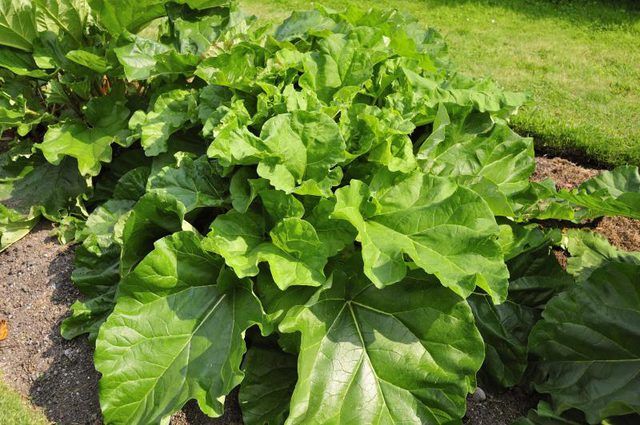Bulbs
Flower Basics
Flower Beds & Specialty Gardens
Flower Garden
Garden Furniture
Garden Gnomes
Garden Seeds
Garden Sheds
Garden Statues
Garden Tools & Supplies
Gardening Basics
Green & Organic
Groundcovers & Vines
Growing Annuals
Growing Basil
Growing Beans
Growing Berries
Growing Blueberries
Growing Cactus
Growing Corn
Growing Cotton
Growing Edibles
Growing Flowers
Growing Garlic
Growing Grapes
Growing Grass
Growing Herbs
Growing Jasmine
Growing Mint
Growing Mushrooms
Orchids
Growing Peanuts
Growing Perennials
Growing Plants
Growing Rosemary
Growing Roses
Growing Strawberries
Growing Sunflowers
Growing Thyme
Growing Tomatoes
Growing Tulips
Growing Vegetables
Herb Basics
Herb Garden
Indoor Growing
Landscaping Basics
Landscaping Patios
Landscaping Plants
Landscaping Shrubs
Landscaping Trees
Landscaping Walks & Pathways
Lawn Basics
Lawn Maintenance
Lawn Mowers
Lawn Ornaments
Lawn Planting
Lawn Tools
Outdoor Growing
Overall Landscape Planning
Pests, Weeds & Problems
Plant Basics
Rock Garden
Rose Garden
Shrubs
Soil
Specialty Gardens
Trees
Vegetable Garden
Yard Maintenance
How to Transplant Rhubarb Plants
How to Transplant Rhubarb Plants. Transplanting rhubarb (Rheum x cultorum or Rheum rhabarbarum) gives fading and overgrown plants a new lease on life. A perennial vegetable that thrives in U.S.Department of Agriculture plant hardiness zones 3 through 8, rhubarb grows five to 15 years in its preferred full-sun sites and rich, fertile soil. It...

Transplanting rhubarb (Rheum x cultorum or Rheum rhabarbarum) gives fading and overgrown plants a new lease on life. A perennial vegetable that thrives in U.S.Department of Agriculture plant hardiness zones 3 through 8, rhubarb grows five to 15 years in its preferred full-sun sites and rich, fertile soil. It requires transplanting when its stalks become thin and spindly and plants outgrow the available space. Dig up and divide rhubarb plants into sections for transplanting. Chinese rhubarb (Rheum palmatum, USDA zones 5 through 7) is an ornamental plant transplanted in the same way as vegetable rhubarb. Be careful around rhubarb leaves, which are poisonous.
Digging Up Rhubarb
Transplanting rhubarb involves digging up the large root ball when the leaves have died down. Rhubarb plants die back over winter, leaving firm, pink, cone-shaped buds that protrude slightly from the soil and a large, heavy root ball. Dig up rhubarb plants in early fall when the leaves have died back or early spring before new growth appears, when daytime temperatures are about 50 degrees Fahrenheit. The best time for transplanting rhubarb is early spring. Push a garden fork or spade into the soil 6 inches from the buds and lever the root ball upward. Repeat this action around the plant until the root ball lifts free from the soil. You may have to dig 1 foot down or deeper to remove a large plant. Small roots break as the root ball leaves the ground, but this rarely harms rhubarb.
Dividing the Root Ball
Divide the rhubarb root ball before transplanting sections in the ground. Push a sharp spade or butcher's knife downward between the buds of the root ball to divide it into sections. Each section should contain one or two large, firm, healthy buds and a portion of the root system. Cut out and discard any dead root areas. Spread a plastic sheet over the sections to keep them moist while you prepare the ground to receive the transplants, or put them in a plastic bag if you can't transplant them immediately. Rhubarb roots can usually survive three or four days out of the ground.
Transplanting Rhubarb
Adding large amounts of organic matter to the planting site when transplanting rhubarb provides the rich soil the plant prefers. Dig a hole in a full-sun site for a rhubarb root section, twice as wide as the root section and 1 to 2 inches less deep. Spread a 4-inch layer of well-rotted manure, compost or other rich organic matter over the dug soil and mix it in. Place the root section in the hole and fill in the gaps around the root section with the amended dug soil. The increased volume of soil creates a low mound, and the tip of the bud should be 1 to 2 inches below the soil surface. Firm the soil gently, and transplant the other root sections. Space sections 2 to 3 feet apart in rows 3 to 4 feet apart. If you transplant rhubarb in early fall after the foliage has died down and daytime temperatures are about 60 degrees Fahrenheit, spread 5 or 6 inches of straw over the mounds several weeks later to help protect them from severe winter weather.
Caring for Transplants
Rhubarb takes one or two years to establish before it can be harvested. Water rhubarb whenever the soil surface is dry after new growth appears in spring and while the plant is in leaf. Apply enough water to puddle the plants. Don't harvest stalks during the first two years after transplanting, but remove any flowering stalks that appear throughout the life of the plant. Flowering stalks carry a large cluster of tiny white flowers and no leaf. Sterilize pruning shear blades by wiping them with a cloth dipped in rubbing alcohol, and prune the flowering stalk at its base. Sterilize pruning shears again when you've finished. In the third year after transplanting, use sterilized pruning shears to harvest stalks for four to six weeks after they begin to sprout. In following years, harvesting takes place up for eight to 10 weeks until early summer. Remove rhubarb leaves before using the stalks.